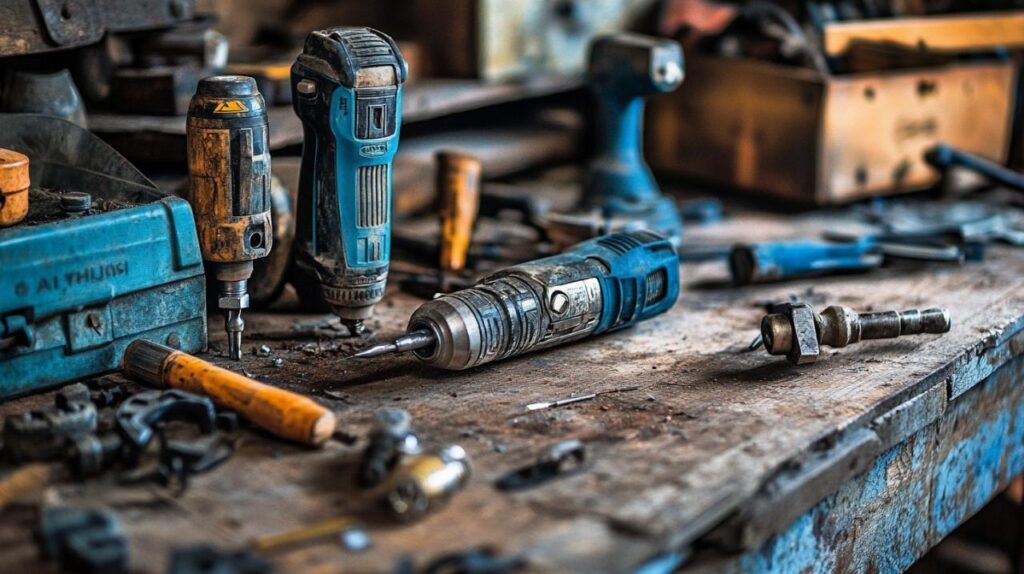Choosing the appropriate power tools and replacement parts in France requires a thoughtful approach that balances your immediate needs with long-term practicality. Whether you are embarking on a modest home improvement project or undertaking professional renovations, understanding the nuances of tool selection ensures that you invest wisely and work efficiently. The French market offers a diverse range of options, from budget-friendly alternatives to premium professional-grade equipment, making it essential to navigate your choices with clarity and confidence.
Understanding your tool requirements and usage
Identifying your project needs: diy versus professional applications
The first step in selecting the right power tools is to assess the nature and frequency of your projects. A hobbyist tackling occasional tasks around the home has vastly different requirements compared to a tradesperson who relies on robust equipment daily. For weekend DIY enthusiasts, tools that offer versatility and ease of use may take precedence over sheer power. Conversely, professionals demand durability, consistent performance, and the ability to withstand rigorous use over extended periods. It is worth noting that the French market caters to both segments, with brands like Makita and Bosch Professional offering reliable solutions for heavy-duty applications, while Einhell provides more accessible options for lighter tasks. Understanding your usage pattern helps narrow down the features you truly need, preventing you from overspending on capabilities you may never use or, conversely, settling for inadequate tools that fail to meet your demands. If you visit ofertaplus.es, you might explore various tool options that align with your specific project requirements.
Evaluating power sources: mains-powered versus battery-operated options
The choice between mains-powered and battery-operated tools is another critical consideration. Mains-powered tools generally deliver more consistent and sustained power, making them ideal for prolonged, intensive work such as cutting through dense materials or drilling into masonry. They eliminate concerns about battery life and recharging, ensuring that you can work uninterrupted as long as you have access to an electrical outlet. However, the reliance on a power source limits mobility and can be cumbersome in environments where extension leads become a hazard. On the other hand, cordless tools offer unparalleled flexibility, allowing you to move freely across job sites or work in areas without convenient electrical access. Advances in battery technology, particularly with brushless motors, have significantly improved runtime and efficiency, making cordless tools increasingly viable for demanding tasks. When opting for cordless equipment, consider the battery capacity, as higher ampere-hour ratings provide longer operational periods. It is also prudent to invest in a single brand ecosystem to ensure battery compatibility across multiple tools, reducing the need for multiple chargers and spare batteries.
Assessing quality, features, and long-term value
Key Features to Look For: Variable Speed, Ergonomics, and Durability
Beyond power source, the specific features of a power tool greatly influence its usability and effectiveness. Variable speed controls are invaluable, as they allow you to adjust the tool's performance to suit different materials and tasks, ensuring precision without compromising control. Ergonomics should never be overlooked, especially if you anticipate extended use. Tools that are well-balanced, lightweight, and designed with comfortable grips reduce fatigue and enhance safety, enabling you to work more efficiently and with greater accuracy. Durability is another cornerstone of value. High-quality construction using robust materials ensures that the tool withstands regular wear and tear, minimising the risk of breakdowns and the need for frequent replacements. Brushless motors, for instance, not only extend battery life but also reduce maintenance requirements by eliminating the wear associated with carbon brushes. By prioritising these features, you invest in tools that deliver consistent performance and longevity, ultimately providing better value for money.
Investing in Reputable Brands and Reliable Guarantees
The allure of inexpensive tools can be tempting, yet choosing reputable brands often proves more economical in the long run. Established manufacturers like DeWalt, Milwaukee, and Bosch Professional have built their reputations on reliability, innovation, and comprehensive customer support. These brands typically offer robust warranties and guarantees, providing peace of mind and protection against manufacturing defects. Moreover, their tools are often supported by extensive networks of service centres and readily available spare parts, which is particularly important if you are based in France and need prompt repairs or replacements. In contrast, lesser-known or budget brands may lack such support infrastructure, leaving you stranded if a tool fails. It is also worth considering the availability of genuine and high-quality aftermarket components, as these ensure compatibility and maintain the tool's performance. When evaluating a purchase, examine the terms of the warranty, the ease of accessing service, and the availability of spare parts within France, as these factors can significantly influence the total cost of ownership.
Sourcing genuine and compatible replacement parts

Ensuring compatibility: genuine versus high-quality aftermarket components
When the time comes to replace worn or damaged parts, ensuring compatibility is paramount. Genuine parts from the original manufacturer are designed to fit perfectly and maintain the tool's specifications, guaranteeing optimal performance and safety. However, genuine components can sometimes be costly or difficult to source promptly. High-quality aftermarket parts offer a viable alternative, often providing comparable performance at a more accessible price point. The key is to verify that these parts meet the necessary standards and are compatible with your specific tool model. France has stringent regulations regarding spare parts availability, particularly for appliances and electronics, which extends a degree of consumer protection. Manufacturers are obligated to supply parts for several years after purchase, and these parts must be replaceable using standard tools. This regulatory environment means that, in many cases, sourcing the right components is more straightforward in France than in some other markets. Always check the part number, consult the tool's manual, and, if in doubt, seek advice from the supplier to avoid purchasing incompatible or substandard items.
Finding Trusted Suppliers and Retailers in France
France boasts a vibrant market for power tools and replacement parts, with numerous retailers both online and in physical stores. Major online platforms such as ManoMano and Cdiscount offer extensive catalogues, competitive pricing, and the convenience of home delivery. These platforms often feature user reviews and detailed product descriptions, aiding your decision-making process. Additionally, local DIY shops provide the advantage of hands-on inspection and immediate purchase, along with the opportunity to seek advice from knowledgeable staff. When selecting a supplier, consider factors such as delivery times, return policies, customer service quality, and the availability of after-sales support. Some retailers also offer price comparison tools, enabling you to identify the best deals across different sellers. It is advisable to establish a relationship with a reliable supplier, as this can facilitate smoother transactions, access to exclusive offers, and timely assistance when you need to source urgent replacements or upgrades.
Making informed purchasing decisions
Reading user reviews and comparing performance ratings
User reviews and performance ratings are invaluable resources when choosing power tools and replacement parts. They provide real-world insights into how a tool performs under various conditions, highlighting strengths and potential weaknesses that may not be apparent from manufacturer descriptions alone. Pay attention to feedback regarding durability, ease of use, and any recurring issues that multiple users report. It is also useful to compare ratings across different models and brands to identify which tools consistently receive positive feedback. While no product is perfect, a pattern of high ratings and satisfied customers is a strong indicator of quality. Be discerning, however, as some reviews may be influenced by promotional incentives or individual biases. Cross-referencing information from multiple sources, including independent review sites and forums, helps you build a more balanced and accurate picture. This research effort, though time-consuming, significantly reduces the risk of disappointment and ensures that your investment meets your expectations.
Prioritising safety and following proper usage guidelines
Regardless of the quality or brand of your power tools, safety must always be your foremost concern. Familiarise yourself with the user manual and adhere strictly to the manufacturer's guidelines for operation, maintenance, and storage. Always wear appropriate personal protective equipment, including safety goggles, gloves, and hearing protection where necessary. Ensure that your workspace is well-lit, free from clutter, and that all tools are in good working order before use. When replacing parts, disconnect the tool from its power source to prevent accidental activation. Regularly inspect your tools for signs of wear or damage, and address any issues promptly to avoid accidents. France's emphasis on consumer safety and its robust regulatory framework provide additional assurance that the tools and parts you purchase meet high standards. However, the ultimate responsibility for safe usage rests with you. By combining quality equipment with diligent safety practices, you create a working environment that is both productive and secure, allowing you to complete your projects with confidence and peace of mind.


